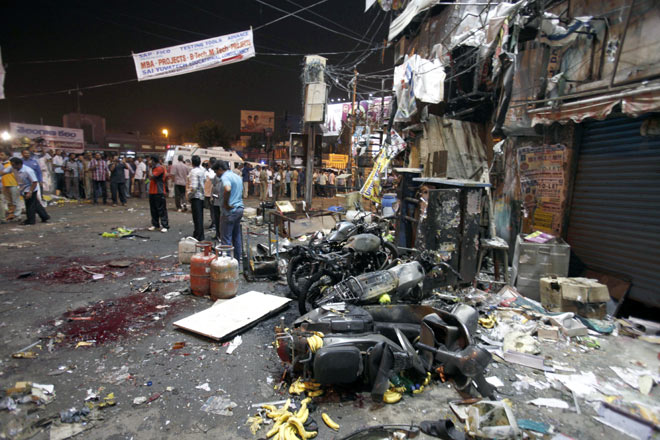Terrorism in south india
January 13, 2017 | Expert Insights
India’s southern states, comprise of five states and three Union Territories; Kerala, Tamil Nadu, Karnataka, Andhra Pradesh, Telangana and UTs of Puducherry, Lakshadweep and Andaman & Nicobar Islands. How serious has the threat of terrorism loomed in these states, in recent times?
Kerala
In 2015-16, there were reports of 21 missing persons, suspected of leaving the country to join the ISIS. In Oct 16, NIA arrested six persons from Kerala (Kannur & Kozhikode) and one from Tamil Nadu (Tirunelveli), for having links with ISIS. There have also been reports of SIMI training camps in Wagamon and influx of FICN (Fake Indian Currency Notes) from Gulf countries. The state has created a special CT force called the Thunderbolts.
Tamil Nadu
In 2014, there was a IED explosion on a train that arrived at Chennai from Guwahati and Bangalore. One woman was killed in the explosion and no organization claimed responsibility. There are reports to suggest that LTTE cadres are taking refuge in the state from persecution in Sri Lanka. However, by enlarge, Tamil Nadu has been largely peaceful. The state has created a special CT force called the Tamil Nadu Commando Force.
Karnataka
Terrorism in Karnataka has been largely confined to bomb blasts. In 2008, there were serial blasts; in nine low-intensity blasts, two persons were killed and several injured. Investigations revealed the use of crude bombs with timer devices. In 2010, three crude bombs were placed at Bangalore’s Chinnaswamy Stadium causing injuries to several spectators. No organization claimed responsibility for these bomb blasts but role of SIMI was suspected. The state has created a special CT force called the Garuda Commando Force.
Andhra & Telangana
With the bifurcation of Andhra Pradesh, Telangana has inherited the naxal-violence prone areas. Most of the violence is created by the PWG (Peoples War Group), which operates from the rural hinterland and also in Odisha and Bihar. There are estimated 800-1000 armed militants, who operate in smaller groups called Dalams. Erstwhile Andhra Pradesh created an excellent rural anti-naxal force called the Greyhounds and an urban CT force called Octopus. Subsequent to bifurcation, the forces (and assets) have been divided between the two states.
UTs; Puducherry, Lakshadweep, A&N
So far there have been no terror attacks on these territories. However, after the Mumbai Attack of 2008, vulnerability of our coastal assets has been highlighted. Terrorist targets are normally high-value assets or population centers. To that extent, Puducherry, Lakshadweep and A&N are not particularly attractive for terrorism but vigilance is still recommended.
Assessment
From a terrorist’s point of view, an attack on a target in South India, would pose serious logistics challenges for planners. The distances involved, negotiating the coastal sea, reconnaissance of targets, local support, marshalling of equipment are some of the parameters that require to be addressed. This is perhaps why Southern India has so far not witnessed a major terror attack. However, southern cities have repeatedly been attacked with IEDs, which is the favorite weapon of terrorists. Since Mumbai Attack, 2008 most southern states have built robust CT capabilities and they may require to strengthen their counter-IED capabilities, as well. We should remember that in May 1991, our former PM Rajiv Gandhi was assassinated by a human bomb, in Sriperumbudur – an operation planned and directed by the LTTE, from Sri Lanka. In South India, bomb attacks are likely to remain the preferred modus operandi, for terrorists.
However, terror threats are not expected to follow logical assessments. Unexpected and unlikely targets, give the best payoffs, to terrorists. It may therefore be prudent, to allocate intelligence resources to monitor activities of the PWG, SIMI and youth indoctrination activities, in the subcontinent.


